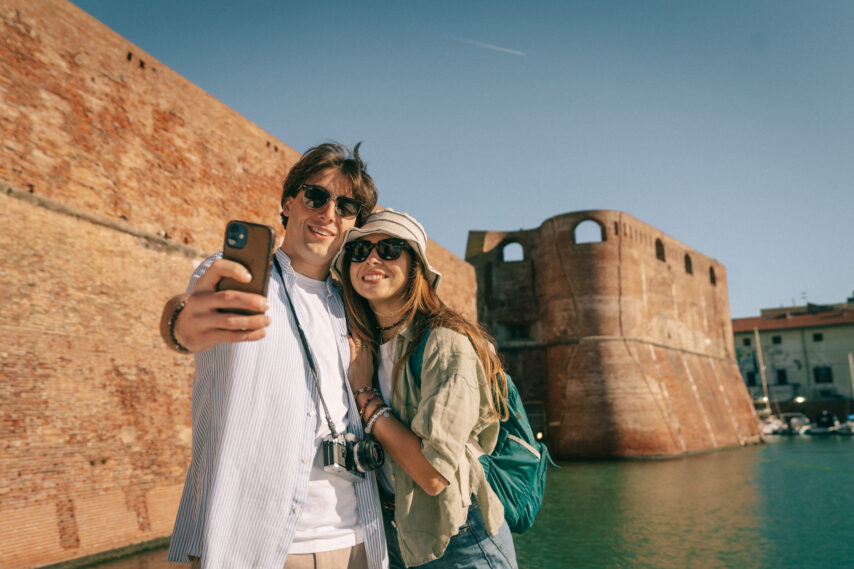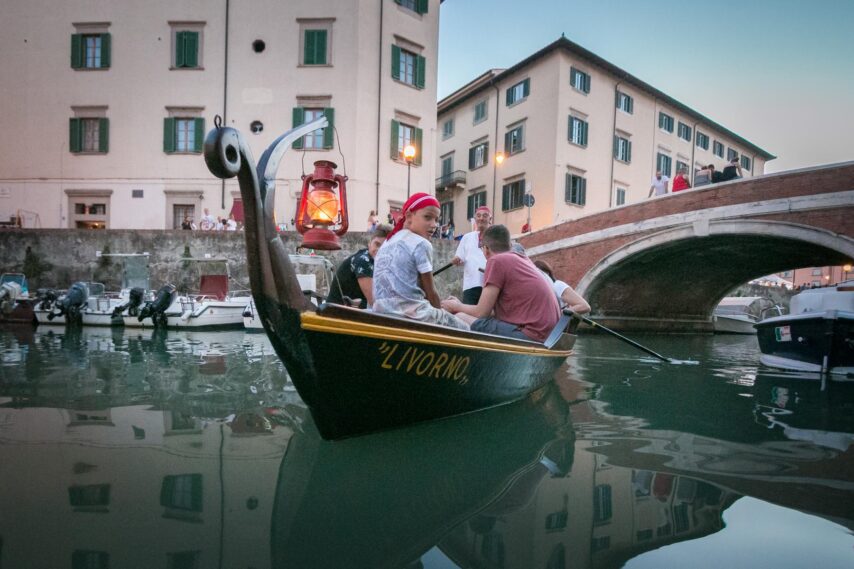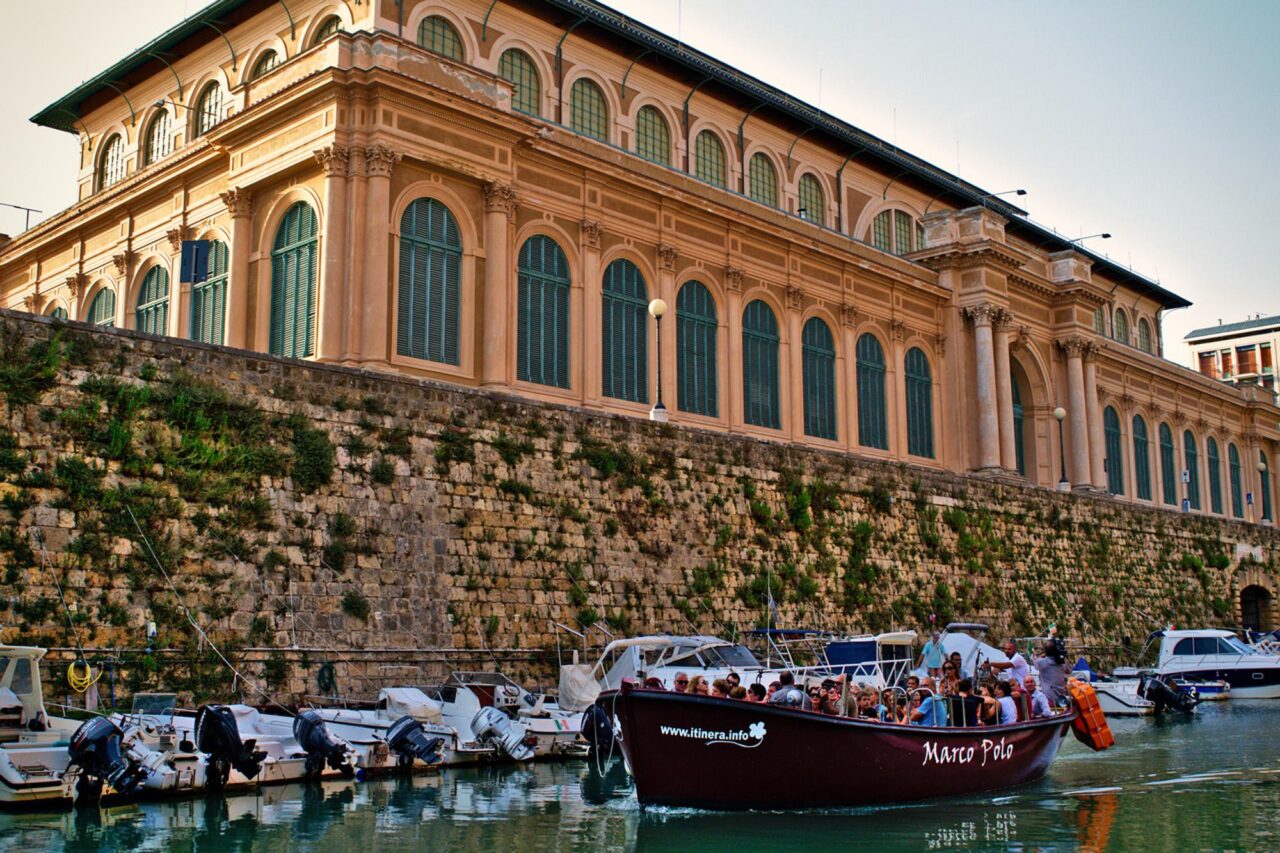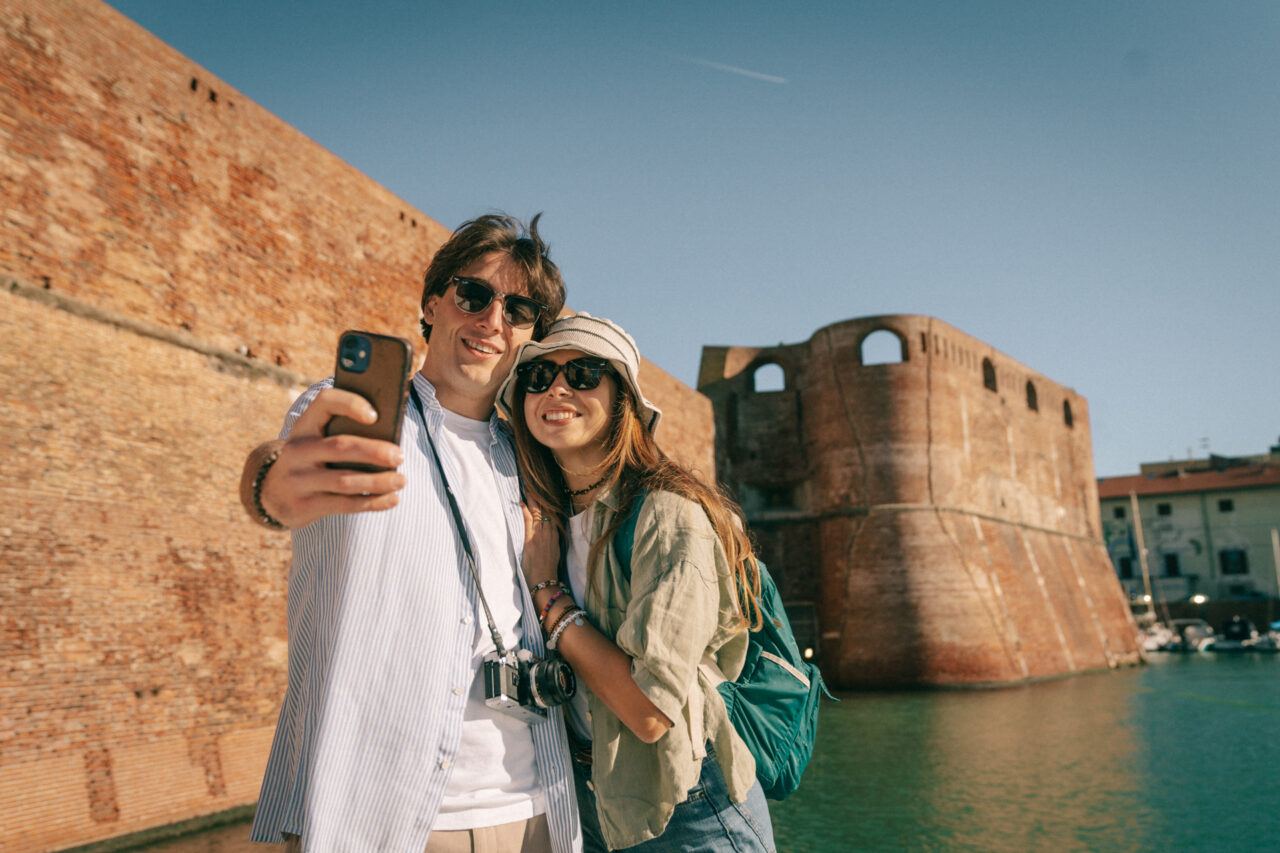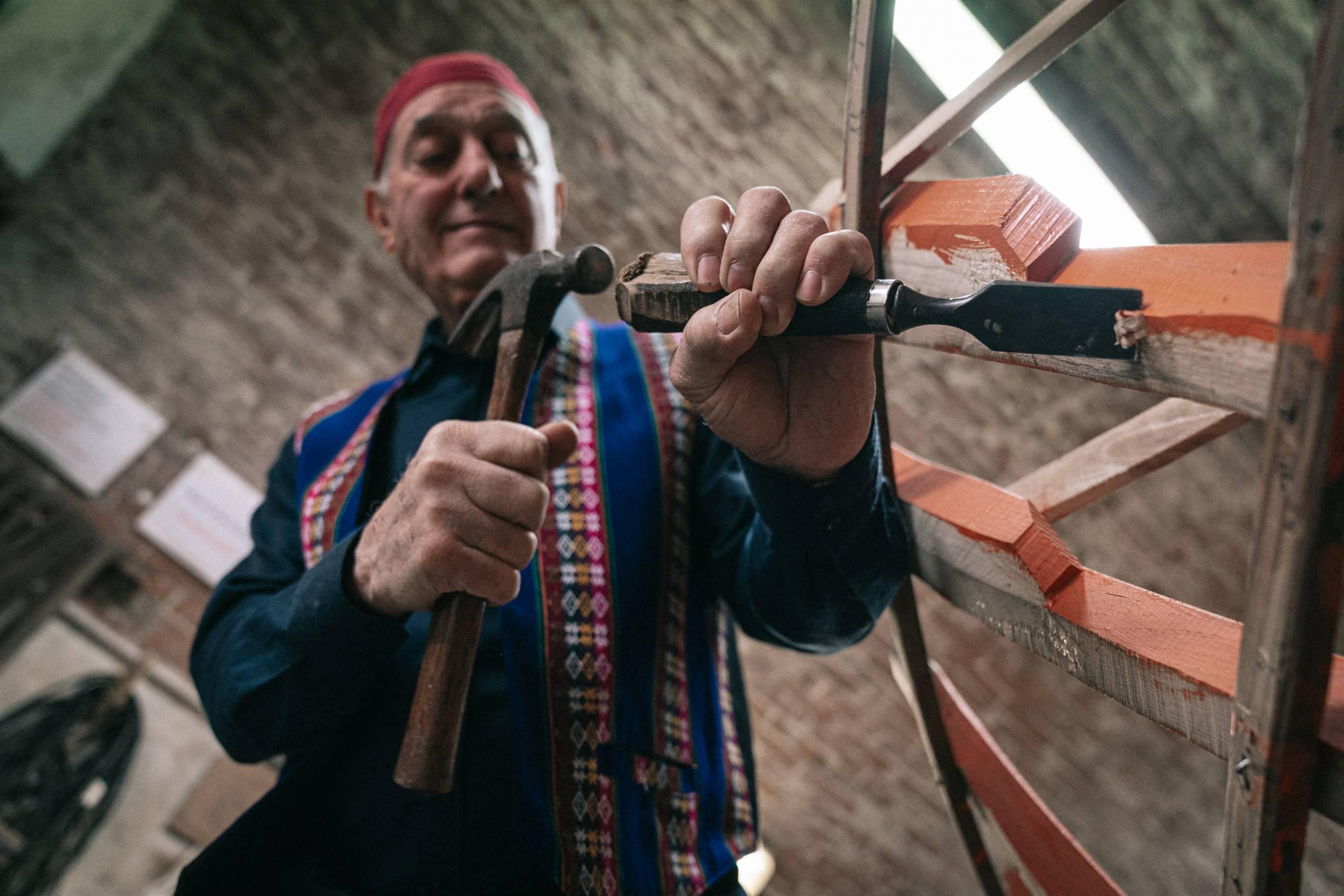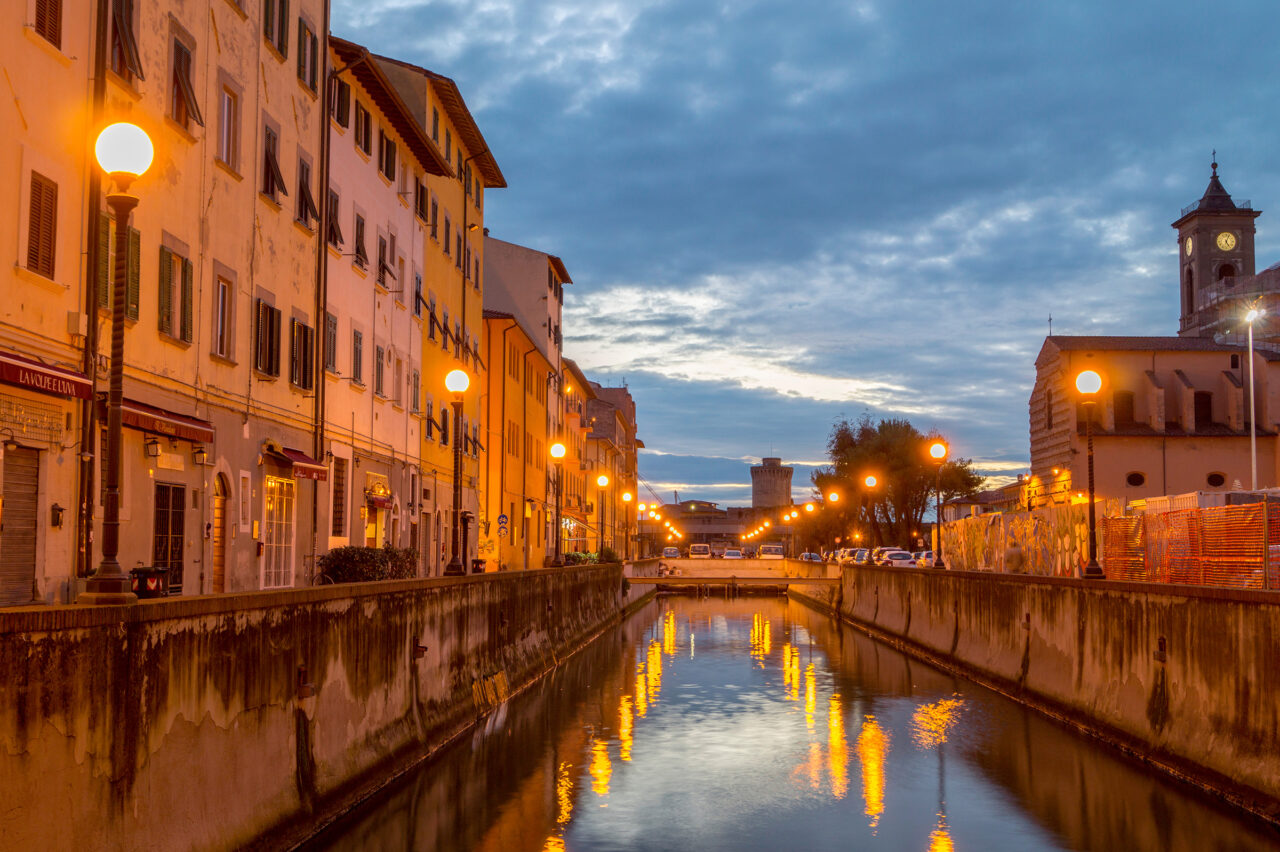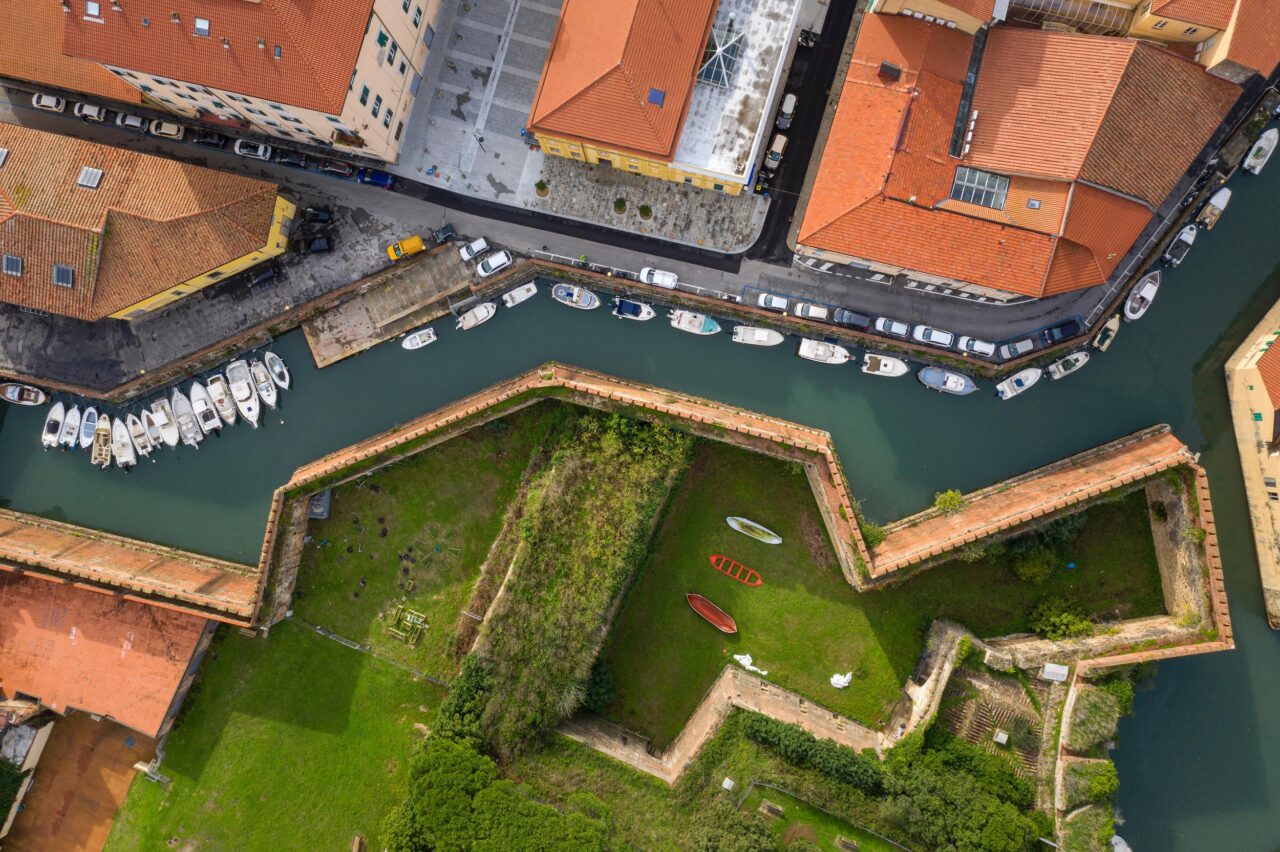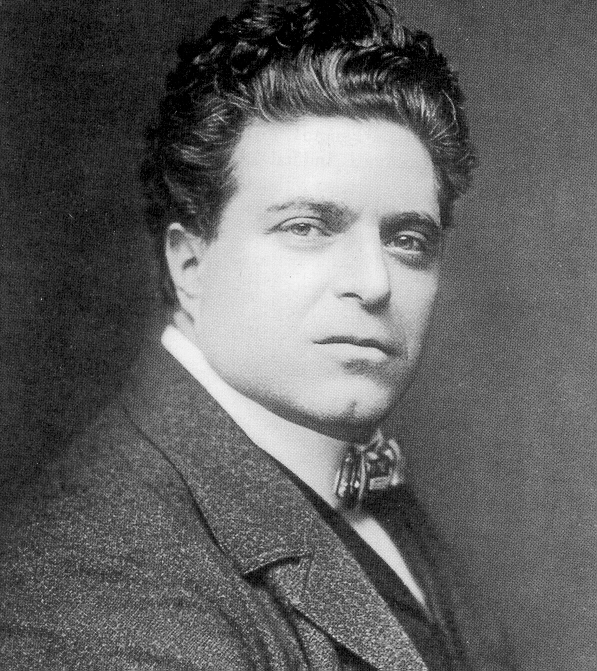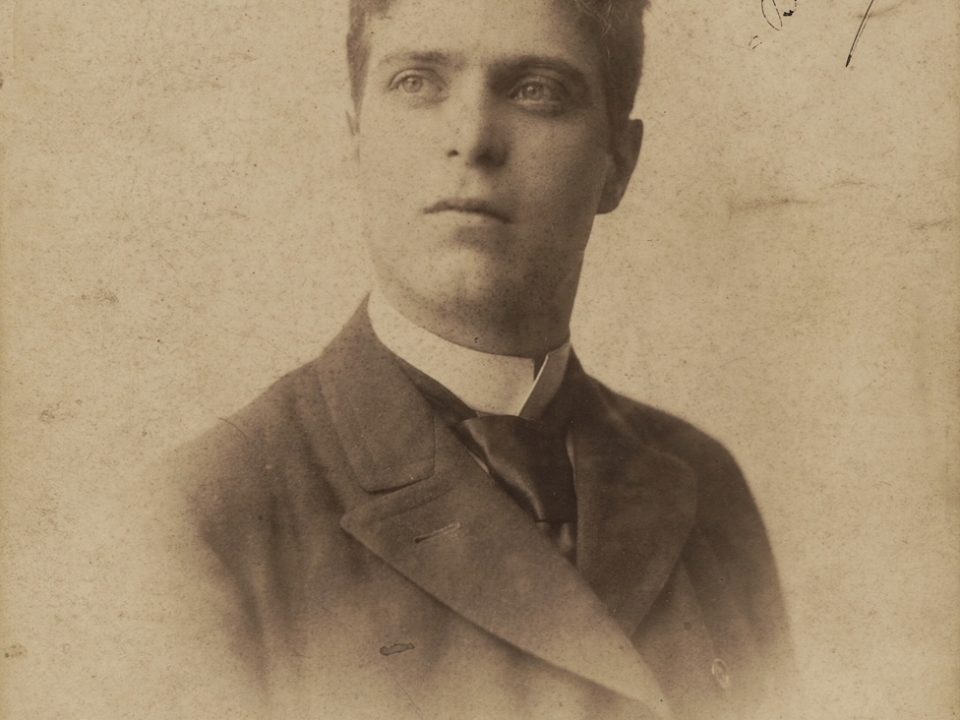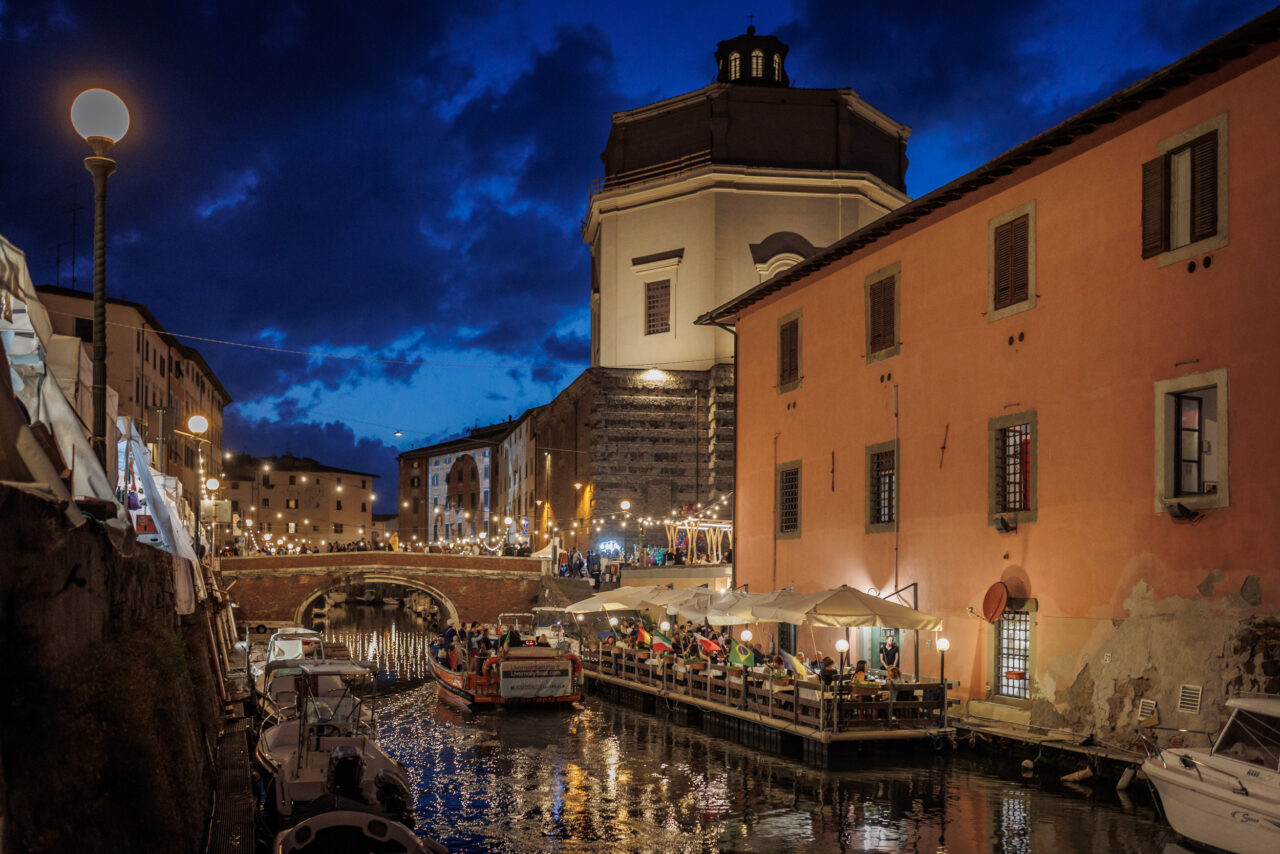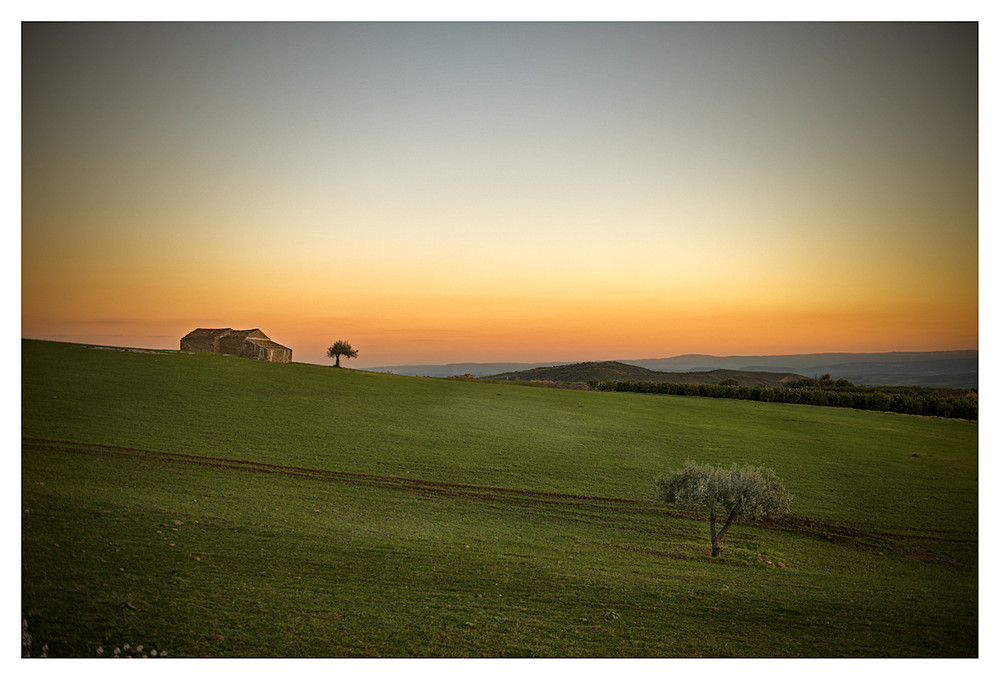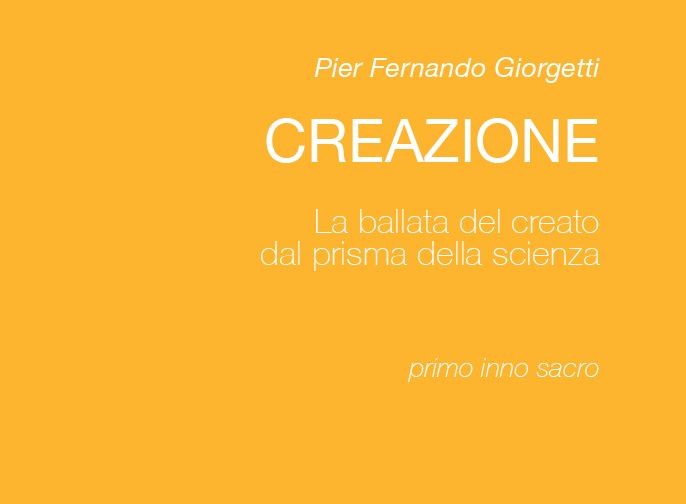Livorno / What to do and see / The Cisternone
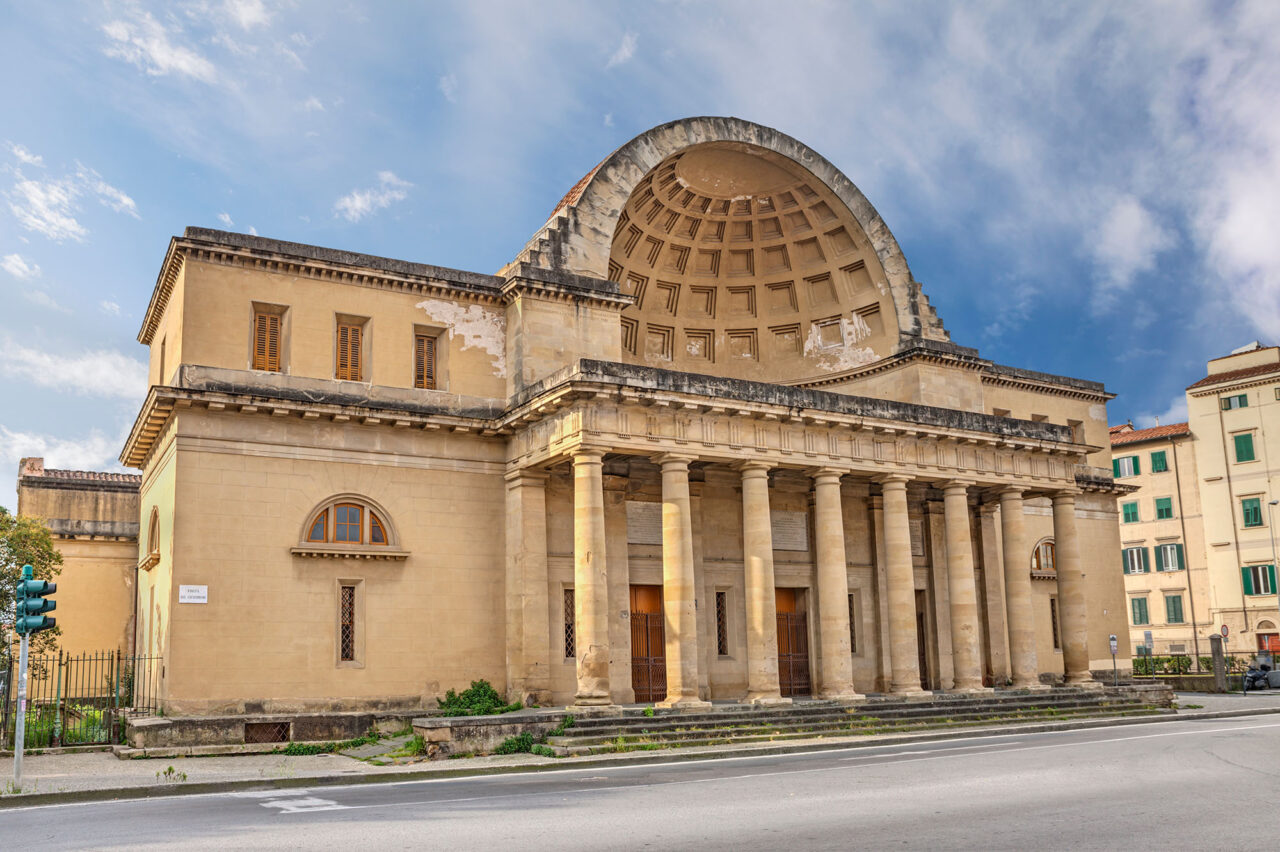
The Cisternone
Discovering an unexpected neoclassical masterpiece
One of the major neoclassical architectural works in Italy
Traveling along the avenue that leads from the Livorno train station to Piazza della Repubblica, you may be struck by a monumental semicircular dome decorated with coffered ceilings resting on a solid colonnade. This is the Cisternone, an impressive 19th-century water reservoir, also known as the “Gran Conserva“, built in perfect neoclassical style according to the design of the illustrious architect Pasquale Poccianti.
Started in 1829 as the terminus of the majestic Acquedotto di Colognole, the Cisternone was designed with the aim of storing and distributing spring water from the hills of Colognole to meet the growing water needs of the city of Livorno. However, Poccianti made some modifications during the construction process, as evidenced by his extensive correspondence with Giovanni Antonio Antolini, architect of the Foro Bonaparte in Milan, mainly concerning the façade.
In 1833, despite various difficulties, the structure of the dome was completed, and in June of the same year, it provided the backdrop for the celebrations of the marriage between Grand Duke Leopold II and Princess Maria Antonia. However, the Cisternone was only completed and put into operation nine years later, in 1842, when the technical works were finally finished.
A perfect balance between architectural beauty and engineering genius
Initially, Poccianti designed the façade of the Cisternone as a simple prospect shielded by Tuscan-style columns, open at the center with a semicircular window. Then, in 1832, he decided to completely revolutionize the original design, creating the magnificent structure that we still admire today.
Recognized as one of the major neoclassical architectural works in Italy, the Cisternone is characterized by its imposing semicircular coffered dome that opens onto the portico that supports it like a large shell resting on the water, almost emphasizing the final destination of the building.
In addition to its aesthetic triumph, the Cisternone is also an example of engineering and functionality that supplied water to Livorno until the early 1900s. The interior, also beautiful and evocative, is divided into a series of aisles composed of Tuscan-style pilasters that support the sail vaults of the ceiling. The original water filtration system, which once included layers of gravel and coal placed at the back of the cistern, was removed with the introduction of chlorine, allowing the tank to reach its full capacity of 11,000 cubic meters of water.
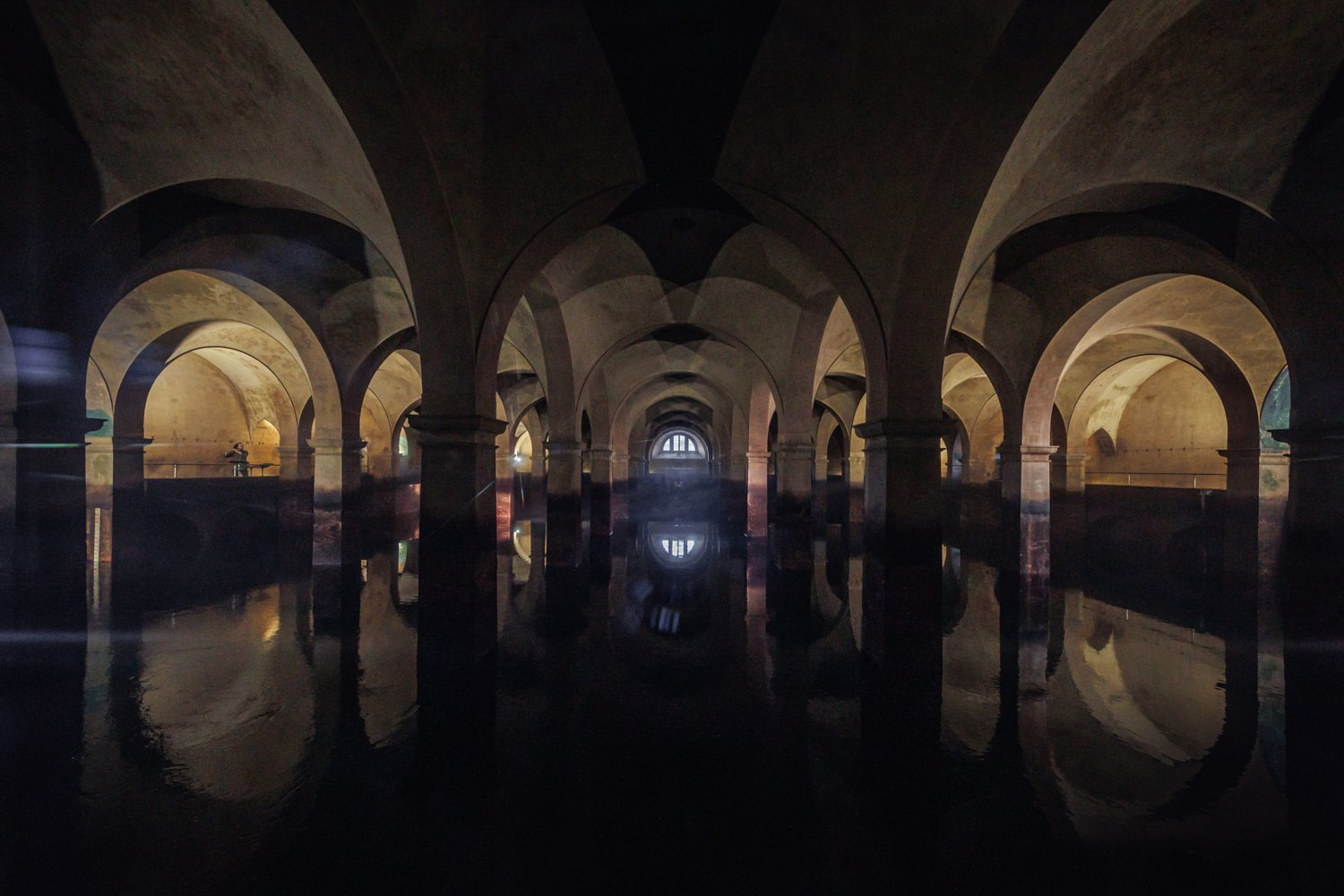
Useful informations
-
Who:
Alone, Children and families, Groups, In pairs, With friends
-
When:
Autumn, Spring, Summer, Winter
-
What:
-
Other characteristics
Indoors, Reachable by public transport, Without reservation
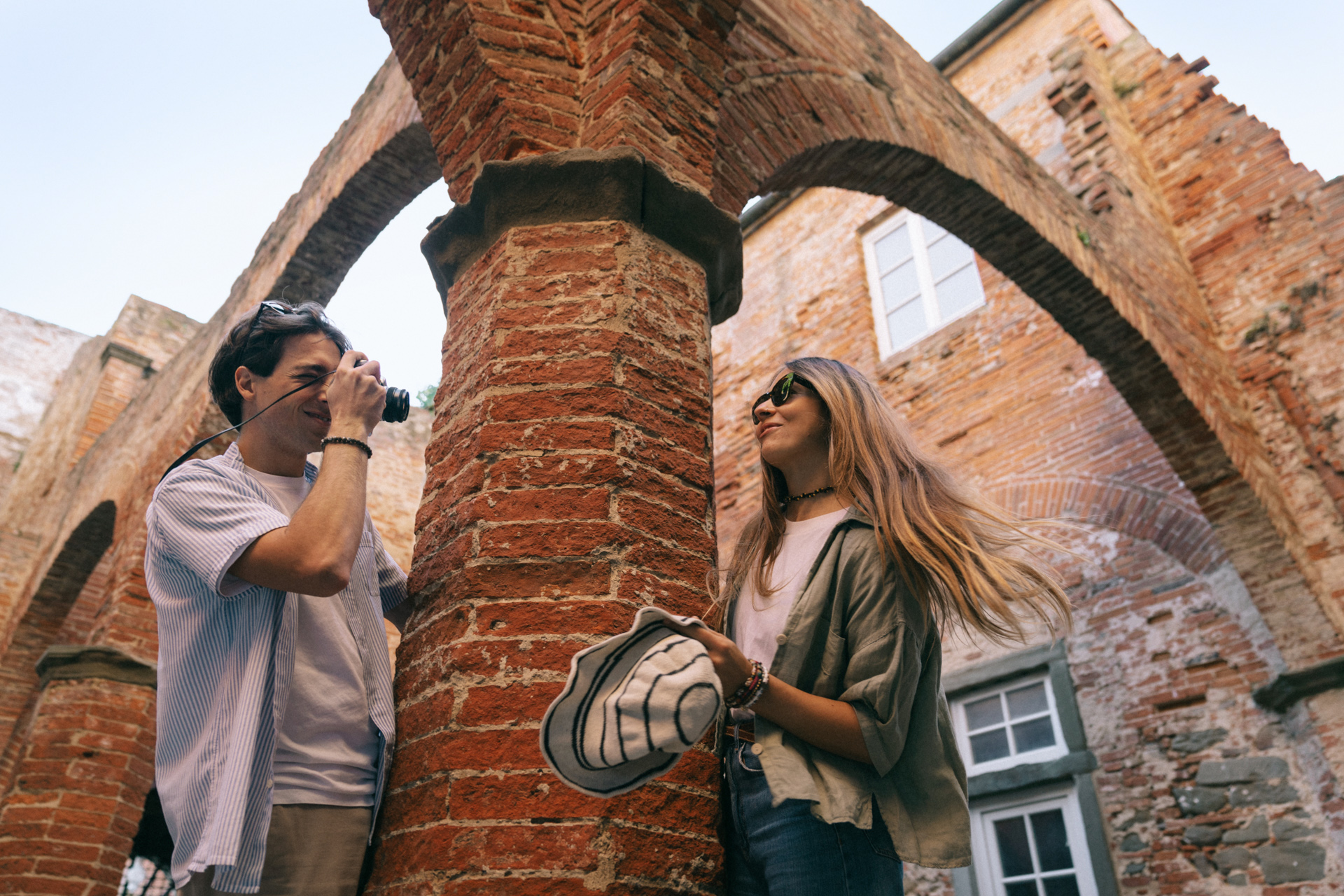
The unexpected Tuscany
Discover all the peculiarities that make Livorno so unique and surprising.
Discover moreTourist information
Offices, contacts, and tourist information to help you organize your visit.
Find places and stories that fit you
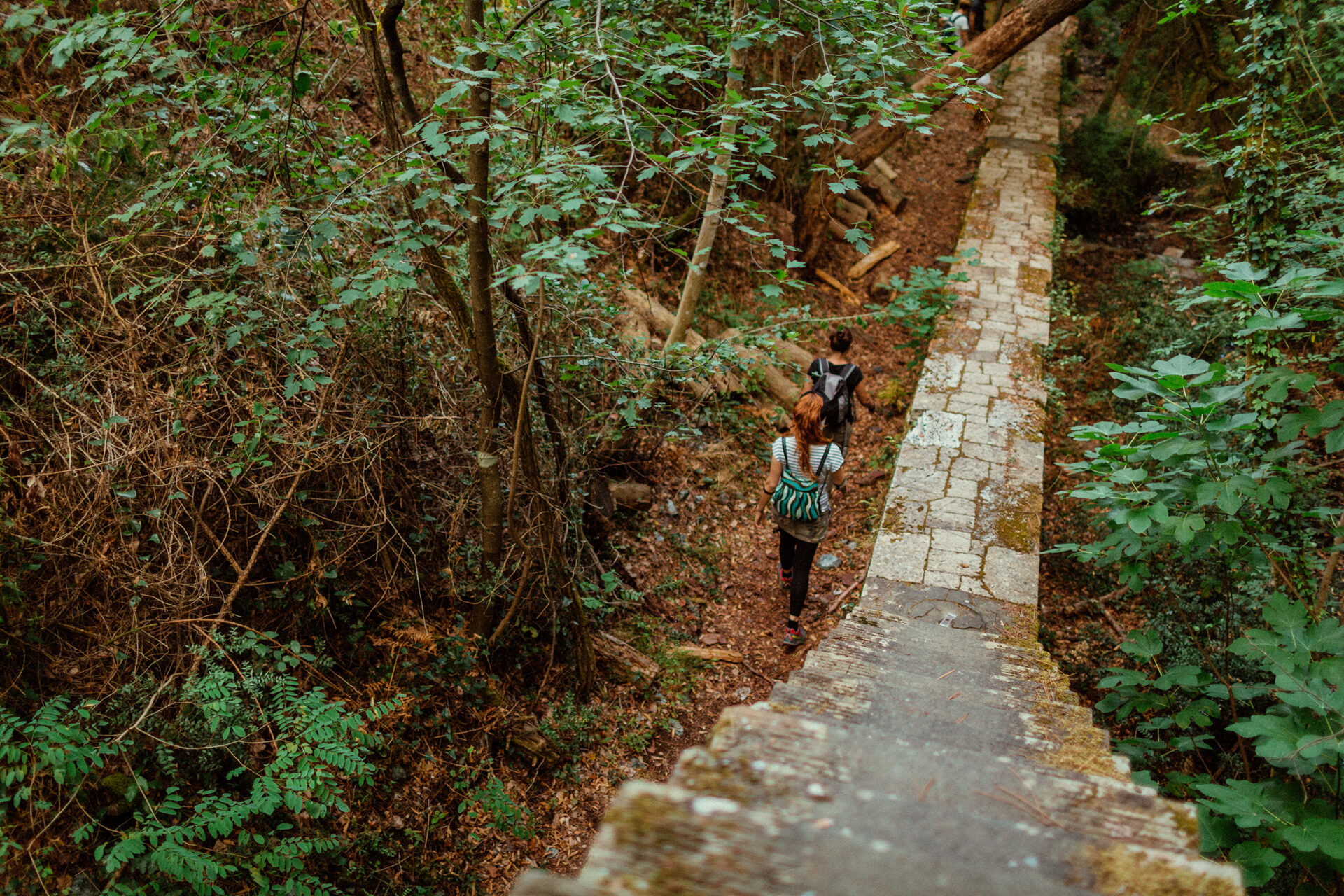
Subscribe to the newsletter
to stay updated
Don't miss any news about events in Livorno and surroundings.
